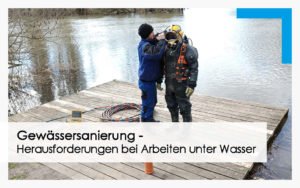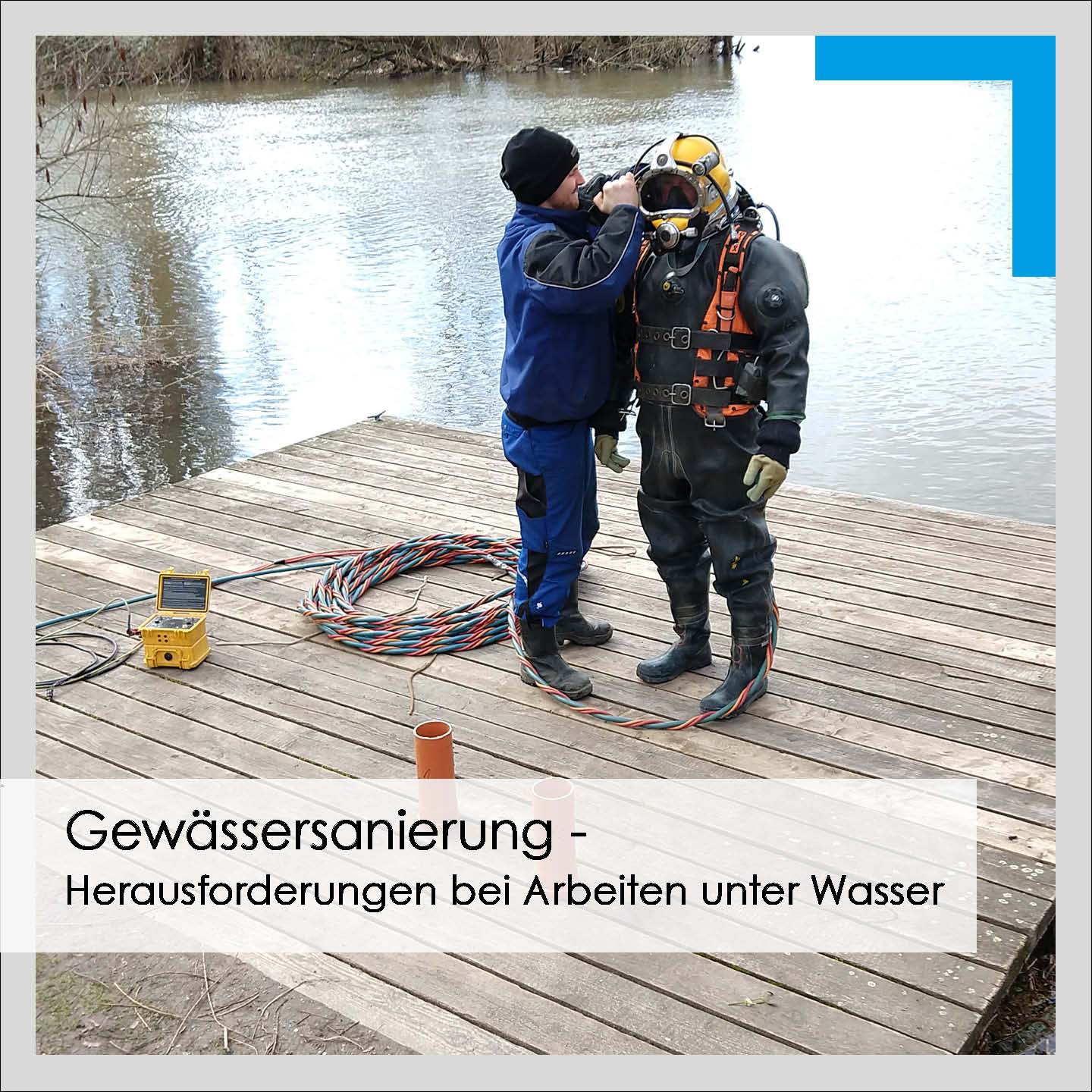
With the help of a diver, undisturbed sediment samples were taken in a water body, which served Mull und Partner Ingenieurgesellschaft for the planning of a water body remediation.
When planning the remediation of water bodies, the site conditions, the sediment composition, as well as the waste management and nature conservation issues must be taken into account. For desludging, it is essential to estimate the masses to be disposed of and their waste classification, as these account for the largest share of the total costs. Since the density and volume of the water sediment under water must be determined, these measurements represent a particular challenge in the planning work.
The volume is usually determined by the watercourse area and the sediment thickness. To determine the sediment thickness, a corresponding number of cross-sections are laid through the water body, depending on the size of the water body. Measurements are taken metre by metre along the profiles with the aid of two dipsticks, relative to the upper edge of the water. One dipstick is equipped with a grid to determine the upper edge of the sediment. The other dipstick is pointed, as the thickness down to the solid subsoil is usually to be determined. The difference between the two measurements gives the sediment thickness. For the calculation of the cubature, depending on the shape of the water body, mean values of the thicknesses are then formed and multiplied by the water body area, interpolated models (e.g. surfers) are created or calculations are carried out with the help of drawing programmes (e.g. AutoCAD) using the cross sections.
For the density determination - as on land - an undisturbed sampling is required, which can be carried out by divers, for example. The diver is guided by radio from land to the desired point and presses a sampling device with a defined volume into the sediment until it is completely flush with the top edge of the sediment. The sample is sealed while still underwater and the in situ storage density and water content of the sediment are then determined in the laboratory. With the help of the previously calculated sediment cubature, the tonnage to be disposed of and the costs for the measure are estimated.
Learn more about our work and projects and follow us: ![]()
![]()
![]()
![]()
#mullandpartners #water remediation #environmental protection #cleanwater

